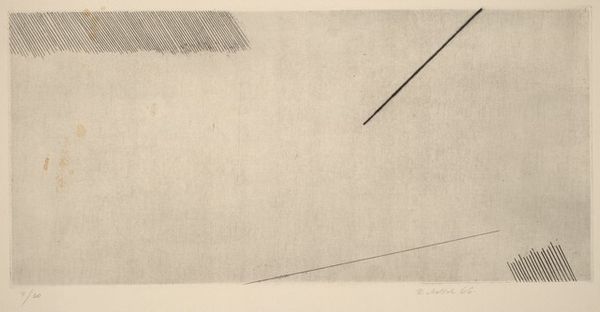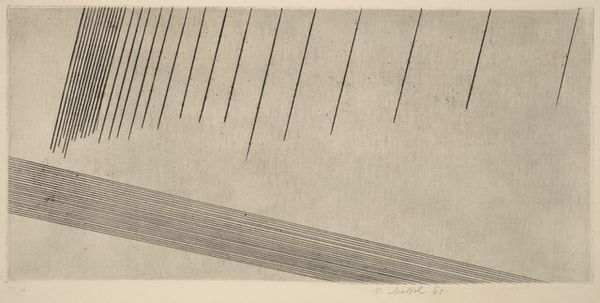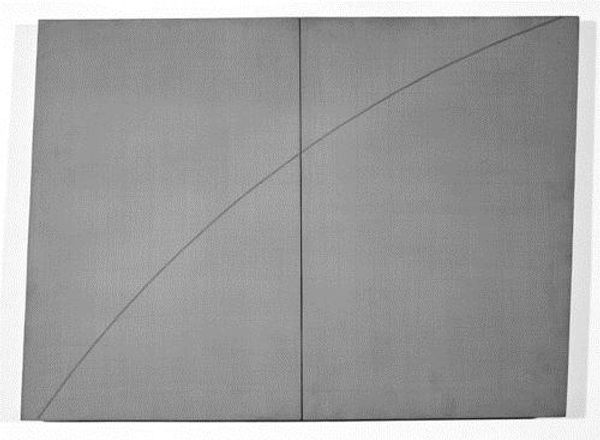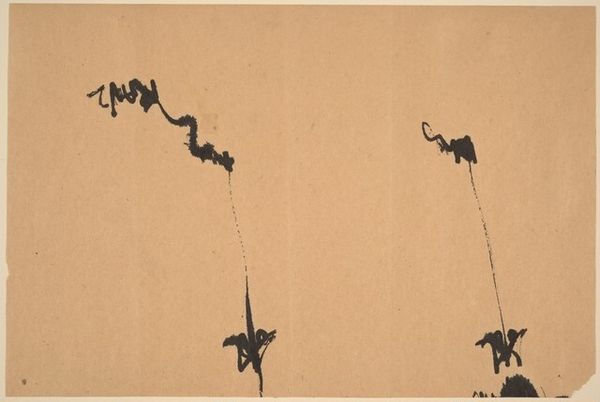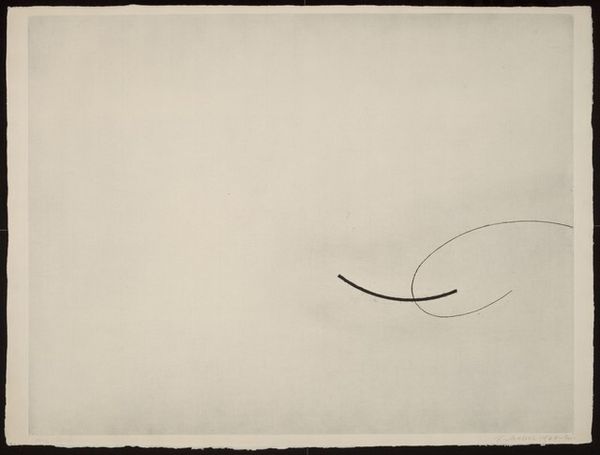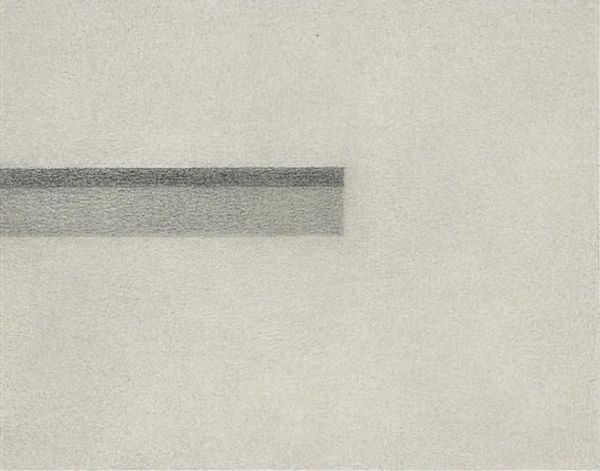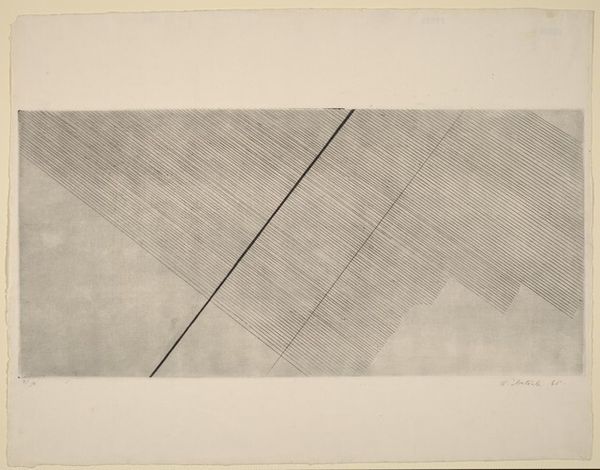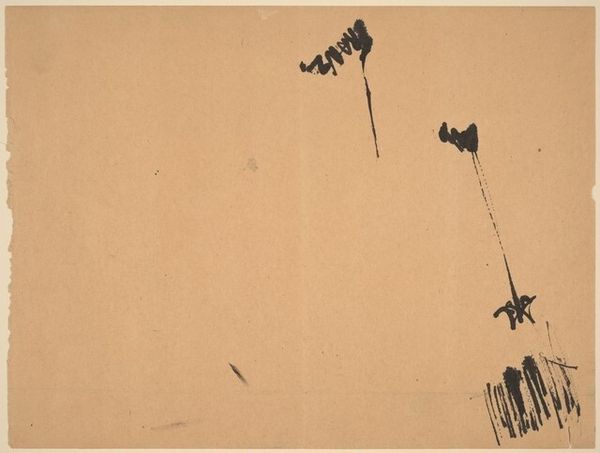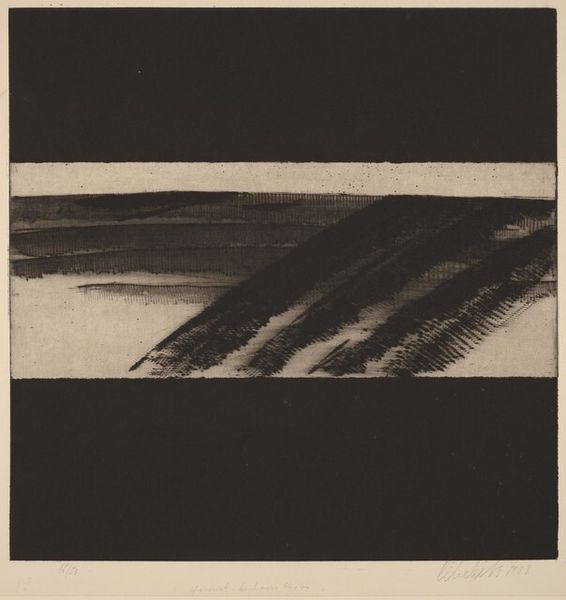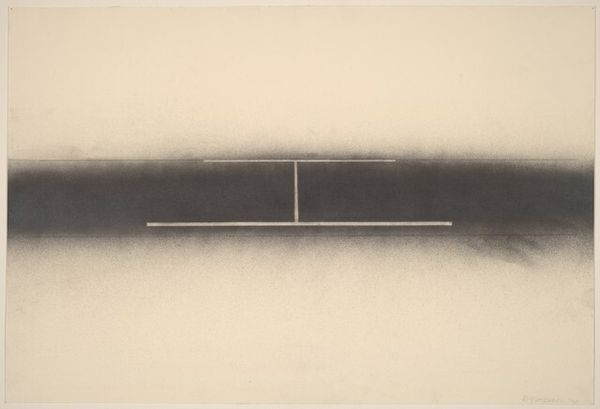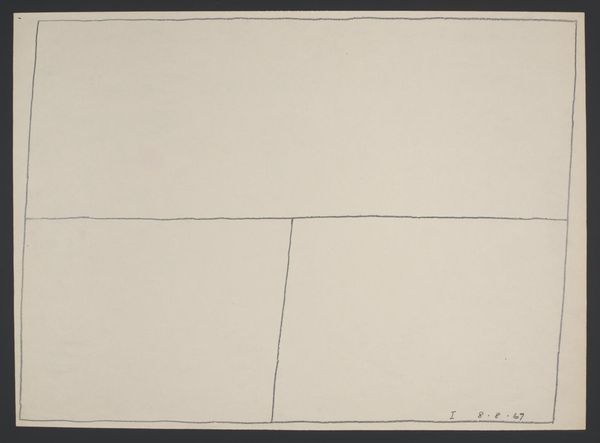
graphic-art, print, etching
#
graphic-art
#
conceptual-art
#
minimalism
# print
#
etching
#
postminimalism
#
geometric
#
abstraction
Dimensions: image: 19 x 26.5 cm (7 1/2 x 10 7/16 in.) sheet: 27 x 43.5 cm (10 5/8 x 17 1/8 in.)
Copyright: National Gallery of Art: CC0 1.0
Curator: Right now we're looking at Karel Malich's "Graphic Sheet 4.V," an etching from 1967. What are your initial thoughts on it? Editor: Stark. Utterly stark. It feels like looking at a crack in the universe or maybe a graph representing the sound of silence. A line cutting through a field of grey... sort of lonely and yet precise. Curator: That sense of precision is key, I think. Malich was working within the Postminimalist movement. This turn toward very simple geometries reflects the art world’s turn against what was regarded as overly theatrical art in favor of more conceptual forms. Editor: Ah, the rebellion! It always simmers just below the surface, doesn't it? You can almost feel the artist muttering, "Enough with the grandiose gestures!" What about that small, almost imperceptible notch on the line itself? It's an anomaly. It is begging me for an explanation! Curator: Those small, irregular details are where the hand of the artist comes through—it disrupts the cool abstraction with a gesture of intentionality. If the pure straight line could embody relentless systematic reason, a detail like that represents lived experience or perhaps even, an opening for personal liberty within prescribed social spaces. Editor: That's it, lived experience disrupting order. Makes it feel more… human. I suppose I’m drawn to what those imperfections represent—the unplanned detour in an otherwise rigid plan, like a wrinkle on an emotionless face. Art making feels much more like a human necessity and an integral means of interrogating authority, doesn't it? Curator: I agree. Thinking about Czech art and culture under Soviet occupation makes one appreciate the subversive charge an apparently harmless aesthetic position might be assigned, often by a security apparatus which is anything but tolerant! Editor: In some ways, this almost mathematical work says so much with so little—leaving us to fill the emotional space that the composition hints at, which feels more generative than prescriptive in an otherwise prescribed society. A clever bit of escapism—visual code for survival. Curator: Exactly. Even these pared down abstract pieces like this can hold within them so much meaning. Editor: Art, an ever-unfolding mirror. Always offering another plane of thought.
Comments
No comments
Be the first to comment and join the conversation on the ultimate creative platform.
